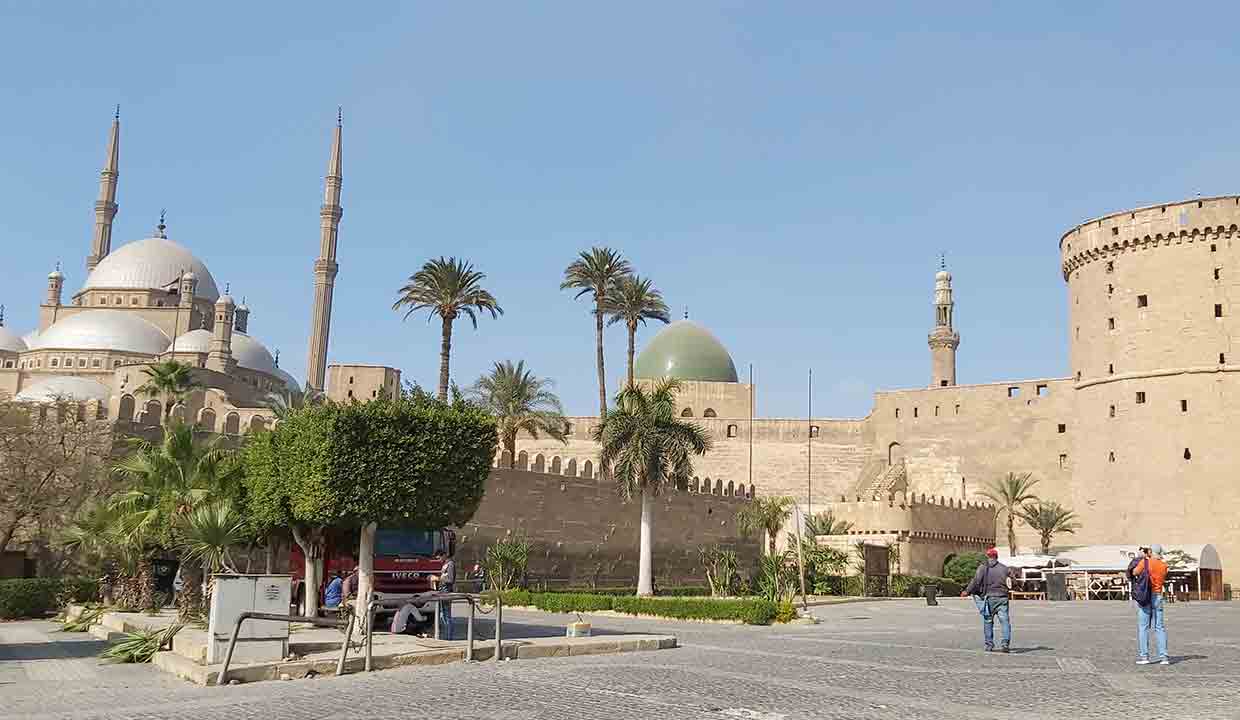The Citadel of Cairo: A majestic relic from Saladin’s era, a testament to Egypt’s architectural prowess and its pivotal role in the annals of history.
The skyline of Cairo, with its intertwining minarets and domes, is punctuated by an imposing fortification that stands as a testament to the city’s illustrious past – the Citadel of Cairo, often referred to as the Citadel of Saladin. This magnificent structure not only defines Cairo’s cityscape but also encapsulates a significant chunk of its rich history.
The Genesis of the Citadel
The Citadel’s inception can be traced back to the 12th century during the reign of the legendary Muslim leader Salah ad-Din, better known in the West as Saladin. Amidst the tumult of the Crusades, Saladin felt the pressing need for a fortified structure that would protect Cairo from potential invasions, particularly from the Crusaders. Built on the Muqattam Hills, the Citadel offered a strategic vantage point, overlooking the entire city and its surroundings, making it an ideal location for monitoring and defense.
Architectural Brilliance and Expansion
While Saladin laid the foundation for the Citadel, it was the subsequent rulers who expanded and beautified it, turning it into a sprawling complex. The Citadel became more than just a military fortification; it transformed into a microcosm of Islamic architecture and culture.
Over the centuries, the Mamluks and the Ottomans added their unique touch to the Citadel. The result is a mosaic of architectural styles, from the austere military architecture of its initial days to the ornate palaces and mosques added later. The Mosque of Muhammad Ali, often referred to as the “Alabaster Mosque” due to its shimmering white facade, is one of the most remarkable structures within the Citadel and serves as a prime example of Ottoman architecture in Egypt.
The Citadel’s Many Roles
Beyond its military function, the Citadel also played various roles in the socio-political life of Cairo. It served as the residence for rulers for nearly 700 years, making it the epicenter of power and governance. Moreover, with its mosques, palaces, and gardens, it became a hub for culture, religion, and recreation.
Legacy and Modern-Day Importance
Today, the Citadel of Saladin stands as one of Cairo’s premier tourist attractions. Beyond its grandeur and architectural significance, it serves as a tangible link to Cairo’s medieval past. As visitors walk through its stone-clad corridors and expansive courtyards, they are instantly transported to an era where Saladin’s vision laid the foundation for one of Cairo’s most enduring landmarks.
In conclusion, the Citadel of Cairo is more than just a monument. It’s a chronicle, written in stone, of the city’s evolution, its triumphs, and its challenges. Saladin’s legacy, immortalized in its walls, continues to captivate, educate, and inspire generations, making the Citadel a must-visit for anyone hoping to grasp the essence of Cairo and its storied past.
